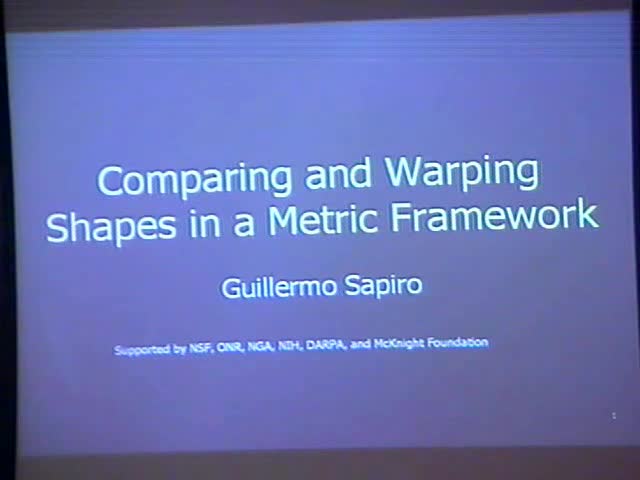Comparing and Warping Shapes in a Metric Framework
Presenter
April 3, 2006
Keywords:
- Metric theory
MSC:
- 11J83
Abstract
A geometric framework for comparing manifolds given by point clouds
is first presented in this talk. The underlying theory is based on
Gromov-Hausdorff distances, leading to isometry invariant and
completely geometric comparisons. This theory is embedded in a
probabilistic setting as derived from random sampling of manifolds,
and then combined with results on matrices of pairwise geodesic distances
to lead to a computational implementation of the framework. The
theoretical and
computational results described are complemented with
experiments for real three dimensional shapes.
In the second part of the talk, based on the notion
Minimizing Lipschitz Extensions and its connection
with the infinity Laplacian, a computational framework for surface
warping and in particular brain warping (the nonlinear registration of
brain imaging data) is presented. The basic concept is
to compute a map between surfaces that minimizes a distortion measure
based on geodesic distances while respecting the boundary conditions
provided. In particular, the global Lipschitz constant of the map is
minimized. This framework allows generic boundary conditions to be
applied and allows direct surface-to-surface warping. It avoids the
need for intermediate maps that flatten the surface onto the plane or
sphere, as is commonly done in the literature on surface-based
non-rigid brain image registration. The presentation of the framework
is complemented with examples on synthetic geometric phantoms and
cortical surfaces extracted from human brain MRI scans.
Joint works with F. Memoli and P. Thompson.
